The electric scooter market is booming and it’s not hard to see why. Riding an electric scooter is extremely convenient, affordable, and a ton of fun! But is it good for commuting just as it is for errands and other practical uses?
Nowadays, we see more and more electric scooters in the market. They proved to be great for the city traffic and they aren’t that expensive to maintain. You can reach another part of the city easily, without being stuck in traffic. On the other hand, this tech isn’t as developed as the scooters with regular engines. So, our question is, are electric scooters worth the money?
In this article, our partners, iScoot, take us through why commuting via an electric scooter is far more beneficial than commuting via other methods.
Contents
Electric Scooter vs Bike
While biking to work can be fun, showing up sweaty in the workplace can be a huge problem. Even if showers are available in your office, it does not make sense having to shower there every morning when you show up for work.
Another disadvantage of commuting via a bike is that the clothes you can wear are very limited. Just imagine the hassle of having to bike to work wearing slacks, skirts, or other bad cycling clothes.
On the other hand, isn’t it nice not having to worry whether your clothes are fine to cycle in? When you commute via an electric scooter, even bad cycling clothes are just okay because you are upright and not pedaling.
Electric scooters are also convenient in terms of where you ride them. Usually, a good bicycle route is also a good scooter route.
Electric Scooter vs Motorcycle
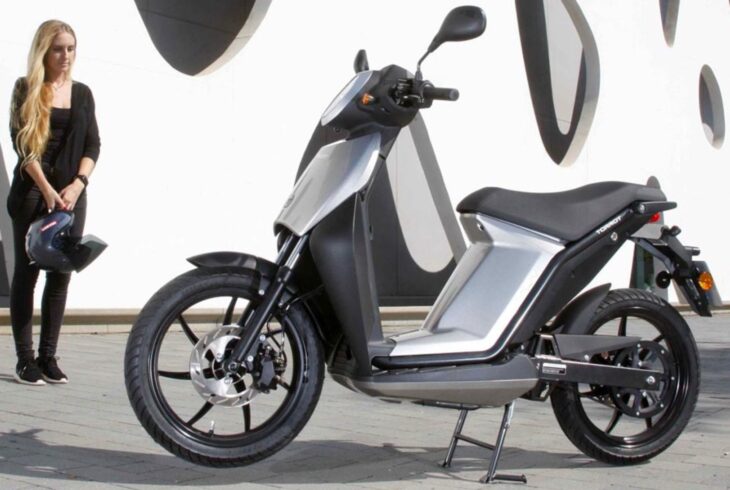
Source: Biker Rated
If you’re a daily commuter, then you are most likely taking a fixed route to work, with a fixed distance and predictable road conditions. You must also know how cumbersome it can be to ride a motorcycle in peak traffic conditions.
Motorcycles typically have higher-revving engines than scooters, so they tend to overheat in traffic. As a result, the engine asks for more fuel.
Commuting via an electric scooter does not only help you reduce fatigue but also save money. With an electric scooter, travelling in bumper-to-bumper traffic is effortless because it does not stall.
Commuting via Electric Scooter vs Driving Your Own Car
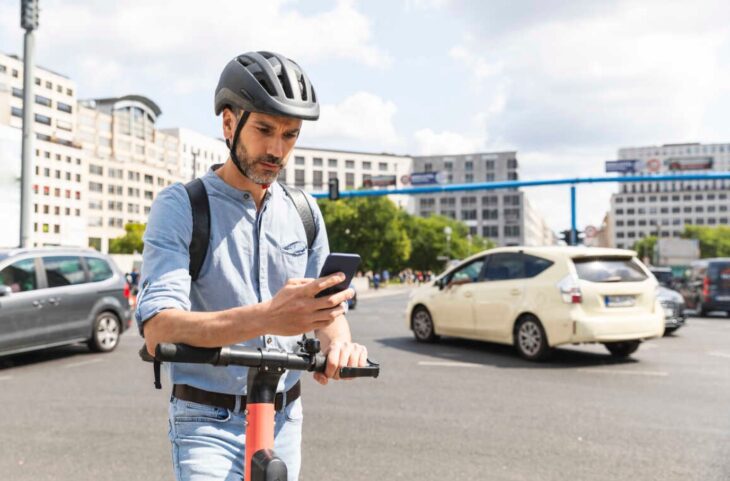
Source: Westend61
Driving your own car to work is a popular option for those who have a regular commute, and it’s understandable. Taking your own car does not only let you go directly to wherever you want to go, it also keeps you from having multiple bus rides, especially when your workplace is far from your home.
However, using your own car every day can be very costly. You have to pay for gas and make sure your registration is up-to-date. Not to mention the inevitable repairs to your car due to wear and tear.
Furthermore, driving cars around cities causes major traffic jams which you will not be able to avoid. One of the possible solutions is to use public transport, but of course, not everyone car rely on public transport no matter how good it is. While cars are a great solution for a rainy day, scooters allow you to get to work easily and they are cheap to maintain.
Conversely, electric scooters are cheaper to use because the cost of fueling an e-scooter is just a little more than 1 percent of the cost of fueling a car. Imagine if those savings add up over weeks, months, and years of commuting!
Commuting via Electric Scooter vs Public Transport
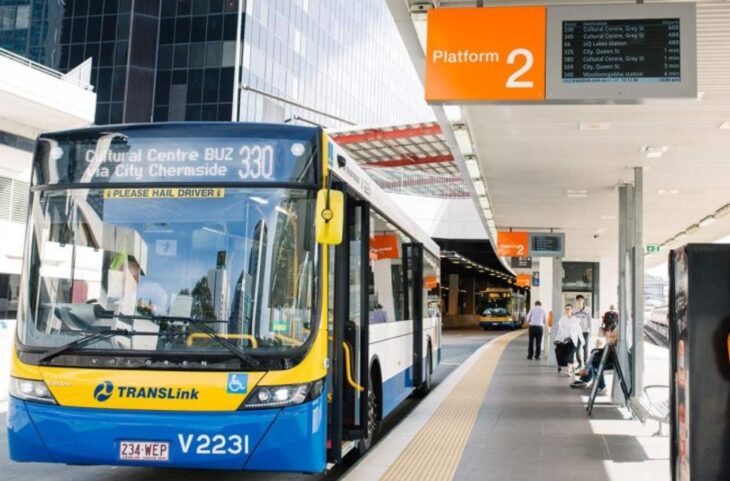
Source: Abc
Commuting via public transport may cost less than driving your own car to work, but this method of commuting has many disadvantages, too. Aside from it forces you to stand when it’s already crowded, the concern about possibly contracting a disease is always there because physical distancing is almost impossible.
When you utilize public transport to go to work, you go to work stressed every day. Having to walk down the bustling streets of the city and hoping to get to the bus stop in time for your transfer so you won’t be late for work every single day is all just tiring. Unfortunately, public transport will rarely take you exactly where you want so walking the rest of the way is inevitable.
You don’t deal with such stresses when you commute via an electric scooter.
Electric Scooter FAQs
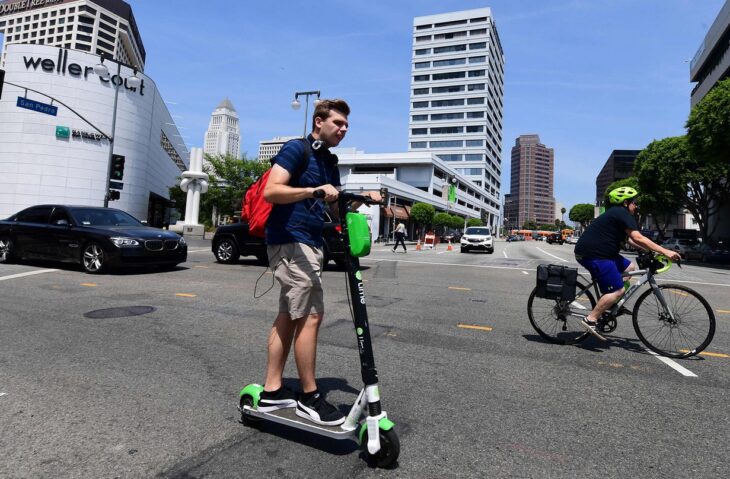
Source: Time Magazine
Can electric scooters be used on footpaths?
The rules differ across the States of Australia, so please check with your local State road traffic authority to be certain of the local laws for details regarding:
- mandatory helmets
- speed limits
- age restrictions
- scooter size and capacity
We are located in Queensland, where electric scooters are considered a wheeled recreational device, so they may be used on footpaths only. They may not be used on roads, or designated bicycle lanes.
Riders must be aged 12 or over and supervised by an adult until aged 16. Helmets are mandatory, and speeds must be limited to 25kph.
Please see more info: https://www.qld.gov.au/transport/safety/rules/wheeled-devices/skateboards and https://www.qld.gov.au/transport/safety/rules/wheeled-devices/personal-mobility-devices
Please view the full information here on the New South Wales Centre for Road Safety site.
New South Wales road rules currently stipulate that “powered foot scooters…cannot be registered and can only be used on private land.” As such, it is illegal to ride an electric scooter anywhere in New South Wales, other than on private property.
Victorian law stipulates that a motorised scooter cannot travel faster than 10km/h. Additionally, a motorised scooter must have a maximum power output of 200 watts or less. Electric scooters that do not meet these stipulations can be used on private property, but not in public.
If an electric scooter fails to meet these requirements, it is classified as a motor vehicle. If classified as a motor vehicle, the electric scooter must be registered, and the rider must have a valid motorcycle license. Please see VicRoads details here.
In South Australia, it is illegal to ride an electric scooter on the road, footpath, bicycle track, or anywhere other than private property. Under South Australian law, electric scooters are considered motor vehicles, with the relevant SA Transport law explaining “operating a motor vehicle requires a driver’s licence, registration and compulsory third party insurance. As these devices [electric scooters] do not meet the safety standards under the Australian Design Rules they are not eligible for registration.”

Source: Hotel Josef
Currently, Western Australian laws via the motor vehicle licensing branch stipulate that electric scooters must travel at 10km/h or less, and “must not be used on footpaths and paths designed for shared use by pedestrians and bicycles.” In Western Australia any unlicensed electric scooters may only be used on private property. These rules apply to petrol and electrical powered scooters and mini motorcycles.
A motorised scooter cannot travel faster than 10km/h in Tasmania, and must have a power output of no more than 200 watts. If these stipulations are not met, the electric scooter is deemed to be a motor vehicle. However, electric scooters cannot be registered as motor vehicles in Tasmania as they fail to meet the minimum safety requirements. As such, any e-scooter that has a power output of more than 200 watts can only be used on private property in Tasmania. Please see info from the Tasmanian department of Transport here.
In the Northern Territory, a motorised foot scooter is typically a wheeled recreation device equipped with an engine or motor of some description. Motorised scooters with a power output greater than 200 watts are defined as motor vehicles in the NT Motor Vehicles Act. As motor vehicles, motorised scooters used on roads, or in public places, need to be registered and ridden by licensed riders. However, motorised scooters are not designed or manufactured to comply with registration requirements and national safety standards for road vehicles, such as Australian Design Rules (ADRs). Therefore, they cannot be granted registration for on-road use and may not be ridden on public roads or places open to the public (including footpaths, bike paths, carparks, etc.
From 1 July 2017, a personal mobility device (such as a Segway or Segway-type device) can be used in the ACT. There are strict rules and regulations applying to the use of these devices. Any breach of these rules and regulations may result in an infringement notice being issued by a police officer, with a penalty attached. From 20 December 2019, the framework for personal mobility devices was amended to include e-scooters and other similar devices. There are restrictions on the weight, dimensions and power of scooters that may be used, but they are generally allowed around Canberra.
They are permitted on footpaths and bicycle paths, but not roads or bicycle lanes There are variable speed limits dependant on driving circumstances, there are age restrictions, you must wear a helmet.
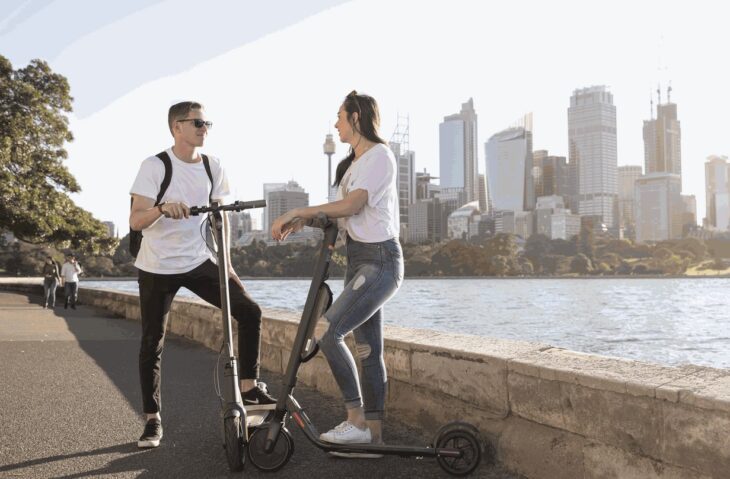
Source: Segway Ninebot
The Verdict
While commuting via other methods has its own advantages, commuting via an electric scooter proves to be more advantageous. Electric scooters are efficient, cost-effective, fun, and may even get you out of traffic altogether. In the right circumstances, they are just about perfect to commute on.
Watch this video: https://www.youtube.com/watch?v=qkKVa-HKUm0
